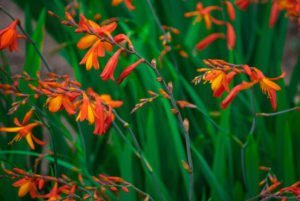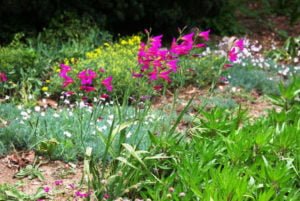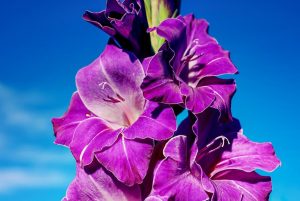Bright and expressive gladioli — probably familiar to all perennial corm flowers. They adorn the flowerbeds of many summer residents and enjoy the well-deserved love of flower growers.
The origin of the gladioli is southern, so in a cool climate, they require some effort from the gardener: for the winter, the corms must be dug up, provided with storage conditions, and planted again in the spring. But when the flowers bloom, these troubles seem to be a low price to pay for the opportunity to admire the amazing beauty.
A variety of gladiolus
Wild-growing gladioli are found in Central Asia, subtropical regions of the African continent, in the south of Europe. Science knows about 200 species of this plant; some of them are successfully used in culture. However, most often a variety of Gladiolus hybridus hort varieties are grown on garden plots.
This plant is easily recognized by its single vertical stems with long (50-80 cm) narrow xiphoid leaves. At the end of the stem in the second half of summer, a spike-shaped inflorescence up to 80 cm long, consisting of simple funnel-shaped flowers, is formed. The size, color and shape of the petals are extremely diverse.
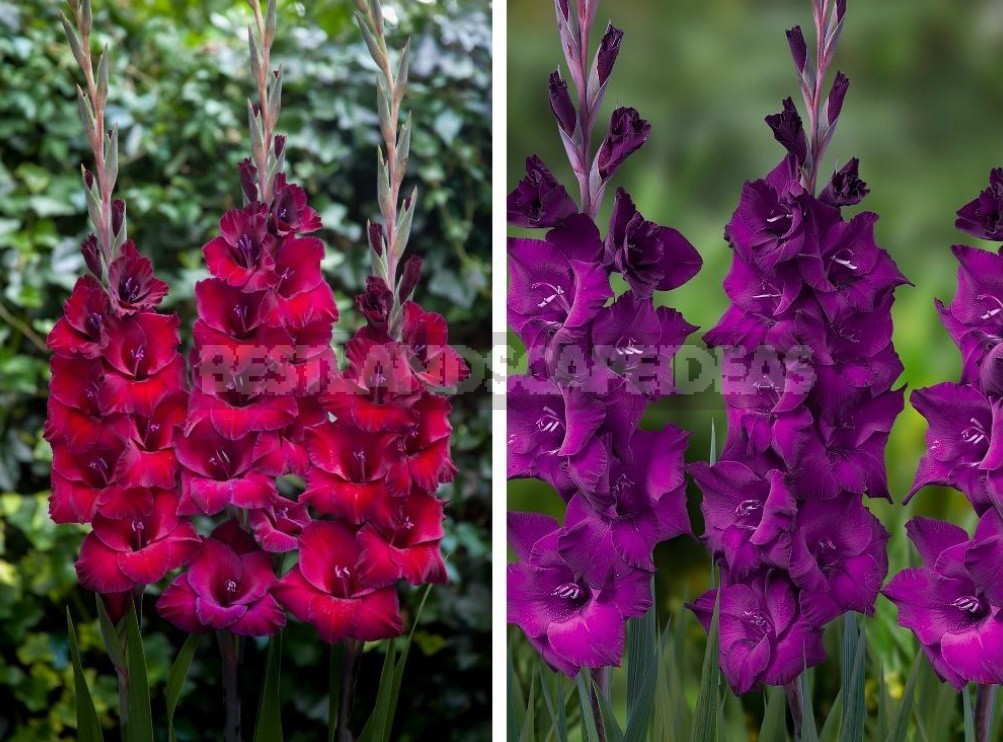
Thanks to the work of breeders, there are a huge number of varieties of gladioli, and for convenience, they are classified according to various characteristics. Each variety has its own code, looking at which, experts determine the flowering period, and color, and the size of the flower, and the number of flowers in the inflorescence, and the height of the plant. Lovers often do not go into such nuances, but to choose the right varieties for themselves, you should still be guided by the variety of these colors.
According to the terms of flowering, gladiolus varieties can be very early, early, mid-early, medium, mid-late, late and very late. This characteristic is important for flower growers in regions with short summers (for example, late and very late varieties, in which inflorescences appear 95-110 days after planting or more, may simply not have time to bloom here), as well as for those who want to grow flowers by a certain date-for example, by September 1.
Gladioli differ in the size of the flower (from miniature to giant), the shape of the petals (simple, or non-corrugated, corrugated, strongly corrugated, super-strongly corrugated). Well, the richness of their color palette is able to satisfy the most demanding taste.

Large-flowered gladioli
Plants of this group include tall (90-130 cm, some — up to 200 cm) varieties with powerful inflorescences (up to 90 cm long). In the inflorescence there are up to 28 flowers, the size of which can reach 18 cm in diameter.
Large-flowered gladioli are very diverse in color, petal shape and flowering time; with a successful selection of varieties and proper agricultural techniques, they will decorate your garden from early summer to early autumn.
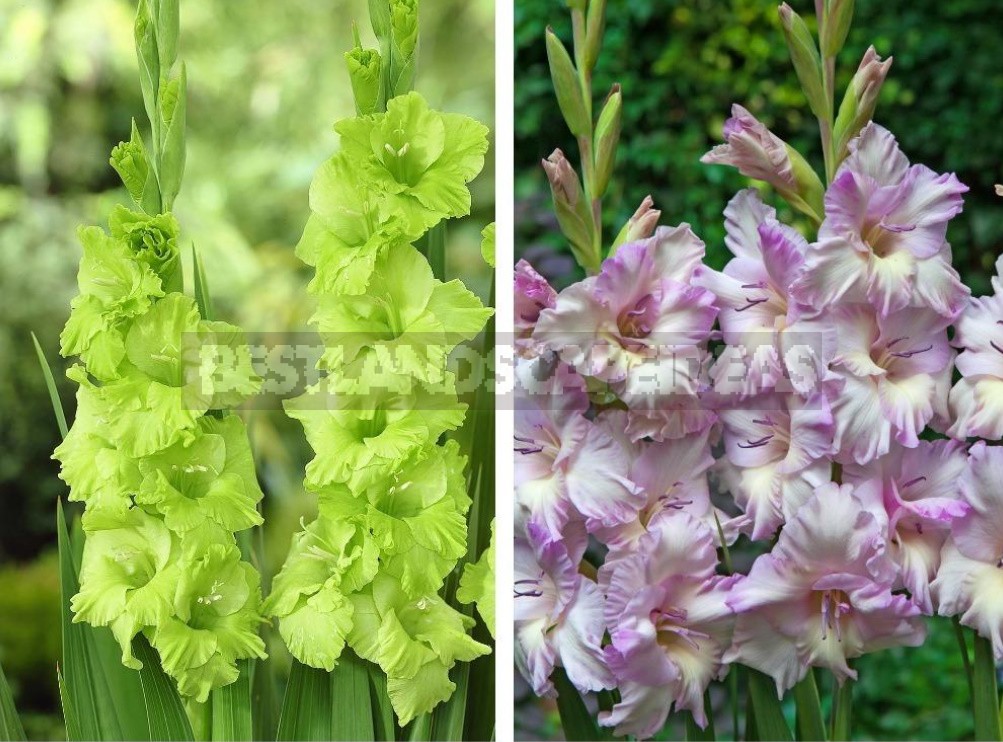
Pay attention, for example, to the varieties:
- ‘Astarte’ – with large purple flowers;
- ‘Africa’ – with bright brick-red flowers;
- ‘Don Luigi’ — with dark red flowers, velvety petals of which have a thin dark lilac border;
- ‘Méditerranée’ — with pale lilac flowers;
- ‘Lady Jane’ – with surprisingly delicate ruffled flowers with a creamy yellowish center and soft lilac tips of the petals;
- ‘Zizani’ is an unusual two-color variety: the petals of large flowers are white and variegated-red with white strokes;
- ‘Evergreen’ – with extravagant yellow-green flowers.
Corrugated Gladioli
In this group, large-flowered varieties with corrugated flowers are combined. The luxurious picture is complemented by exotic colors and a pleasant dense velvety texture of the petals. Plants with a height of 80-100 cm solo in garden compositions and stand perfectly in the cut; they make magnificent ceremonial bouquets. It is no accident that the popularity of these varieties around the world is growing every year.
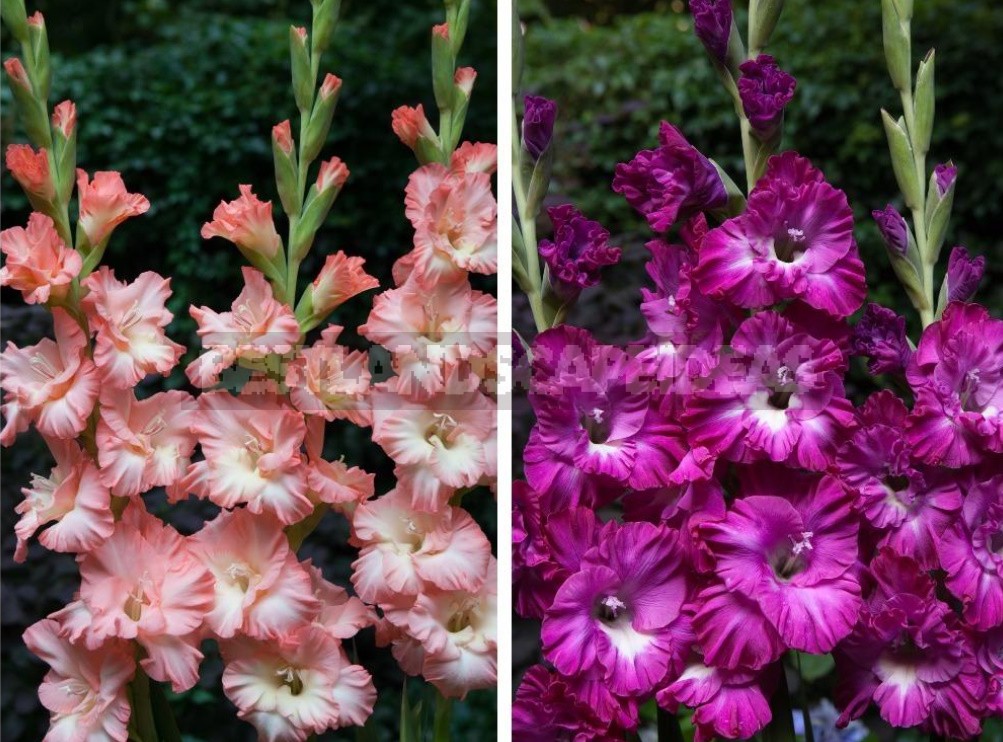
For example, pay attention to the gladioli:
- ‘Raffled Pink’ – with delicate cream-pink flowers;
- ‘Nairobi Raffle’ – its bright purple flowers have a contrasting white spot in the center.
Medium-flowered gladioli
The ideal solution for small garden compositions, container plantings. The series “Bambino” presents low (60-90 cm) flowerbed gladioli, inflorescences of which consist of numerous small flowers of various colors.
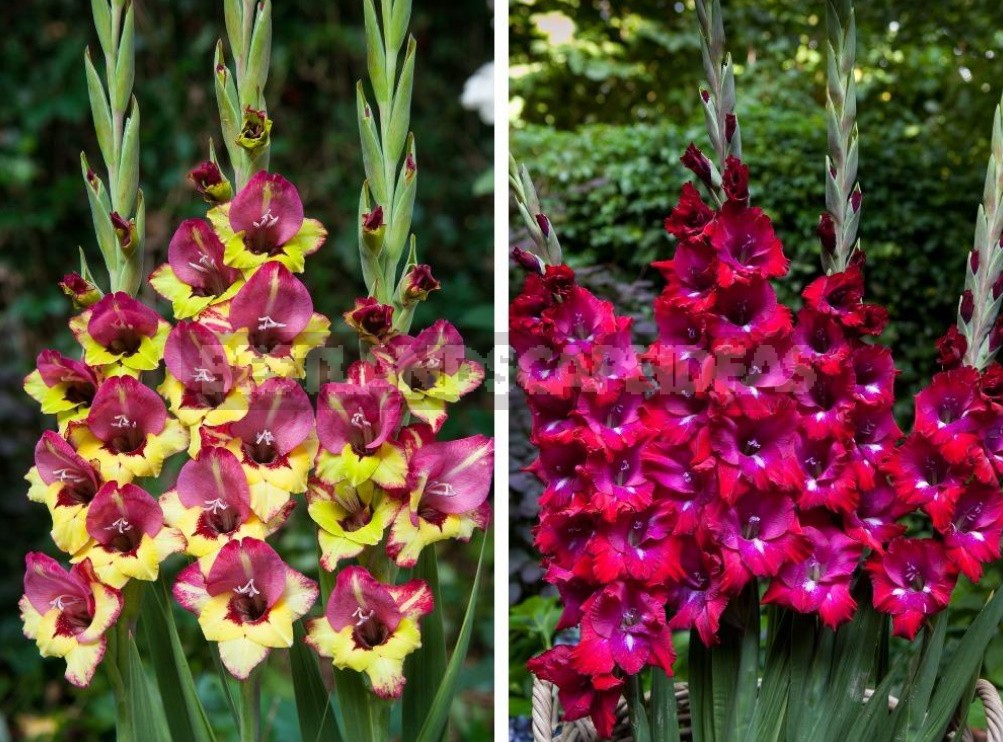
You may like, for example, varieties:
- ‘Vasto’ – with two-tone yellow-pink flowers;
- ‘San Siro’ – with bright flowers, purple in the center and red on the edges of the petals; in the center of the lower petals — a contrasting white smear.
Growing and caring for gladioli
For planting, choose sunny areas that are protected from the wind. It is not recommended to plant gladioli in the same place for several years in a row. The plant is undemanding to the soil, but prefers soils with a slightly acidic reaction. Do not apply humus and other organic fertilizers when planting — this can be done in the fall when preparing a place for a flower bed.
Gladiolus does not tolerate stagnant water, so it is necessary to take care of good drainage; it is recommended to pour clean river sand on the bottom of the planting hole — this will prevent the rotting of the planting material.
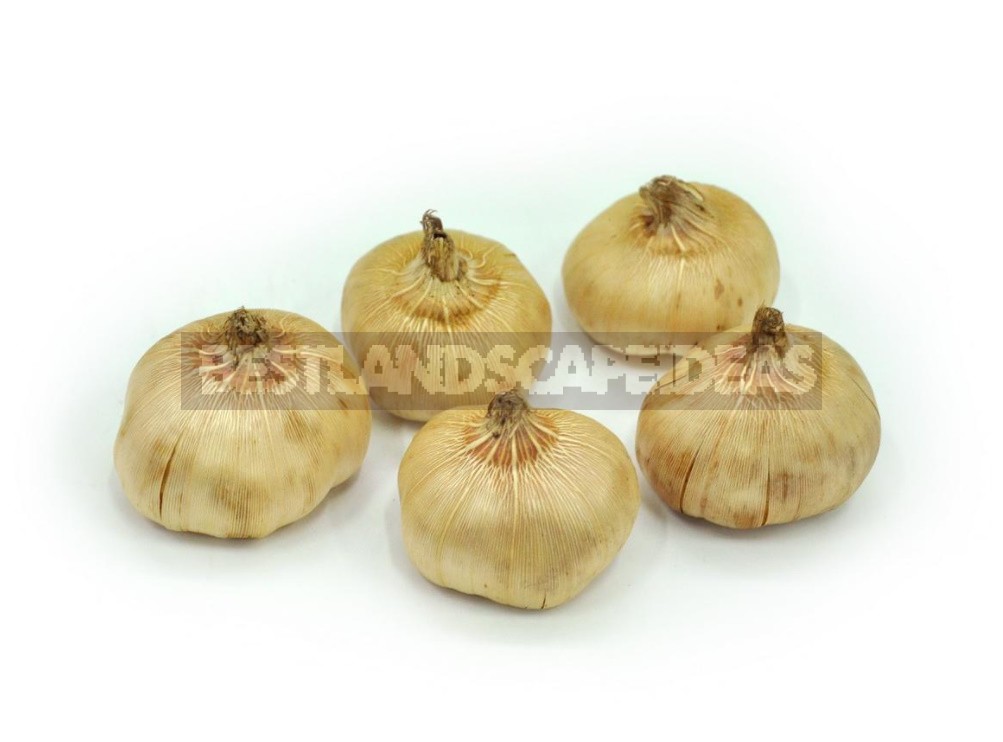
The depth of planting depends on the characteristics of the soil: on light sandy and sandy loam corms are buried by 10-13 cm, on heavy, dense loam-by 8-10 cm. The distance between the plants is from 10-15 cm (for large varieties) to 5-10 cm (for compact varieties with small corms).
Planting begins when the soil at the depth of planting warms up to +8…+10 degrees. Tall varieties with heavy inflorescences may need supports. This should be taken care of in advance, so as not to damage the corm later by installing a support.
During the summer, it is necessary to weed the plantings, loosen the soil, water the plants in dry weather. Fertilizing is carried out as needed.
Flower stalks with fading flowers should be cut — this not only allows you to maintain the attractive appearance of the flower garden, but also helps the growth of corms. In September — before the first frost — the gladioli are dug up and prepared for storage.

Some summer residents consider these annual troubles with corms too burdensome and grow gladioli in an annual culture, acquiring new planting material every spring. But there are varieties that you really want to preserve and propagate — and suddenly next season you will not be able to buy them!
Healthy, well-dried bulbs are successfully preserved until spring at a temperature of +6…+8 degrees and humidity of 60-70%. Be sure to take care of ventilation, so that moisture does not accumulate, which can cause mold and rot of the planting material.
And for all these worries next summer, the plants will thank you with a rainbow of gorgeous flowers. Plant gladioli!

